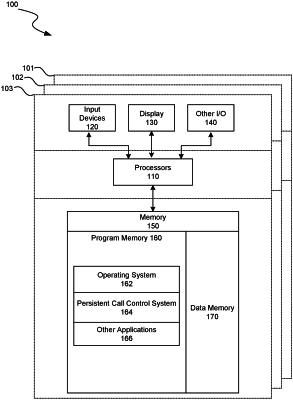| CPC H04L 65/1093 (2013.01) [H04L 65/403 (2013.01); H04M 3/568 (2013.01); H04N 7/157 (2013.01)] | 18 Claims |

|
1. A method for orchestrating calls and user interactions, with a persistent call control user interface element, in an artificial reality environment, the method comprising:
rendering a first artificial reality experience for a user on an artificial reality device, wherein the artificial reality device provides an audio call, between the user and one or more other users on respective other artificial reality devices, while the user is accessing the first artificial reality experience,
wherein at least one of the one or more other users is accessing, via at least one respective other artificial reality device of the respective other artificial reality device, a different artificial reality experience than the first artificial reality experience, while the user is accessing the first artificial reality experience;
rendering an overlay on the artificial reality device while the user is accessing the first artificial reality experience, the overlay including a set of controls for the audio call between the user and the one or more other users, wherein the set of controls includes controls that A) identify the one or more other users, and B) share a view displayed on the artificial reality device with the at least one of the one or more other users via the respective at least one other artificial reality devices;
receiving input, from the user via the artificial reality device, to travel to a second artificial reality experience;
transitioning the user to the second artificial reality experience based on the input, wherein the overlay and the audio call persist on the artificial reality device during the transitioning and while the user is accessing the second artificial reality experience; and
balancing audio output from the second artificial reality experience and the audio call, while the user is accessing the second artificial reality experience, based on input received via the set of controls included in the overlay.
|